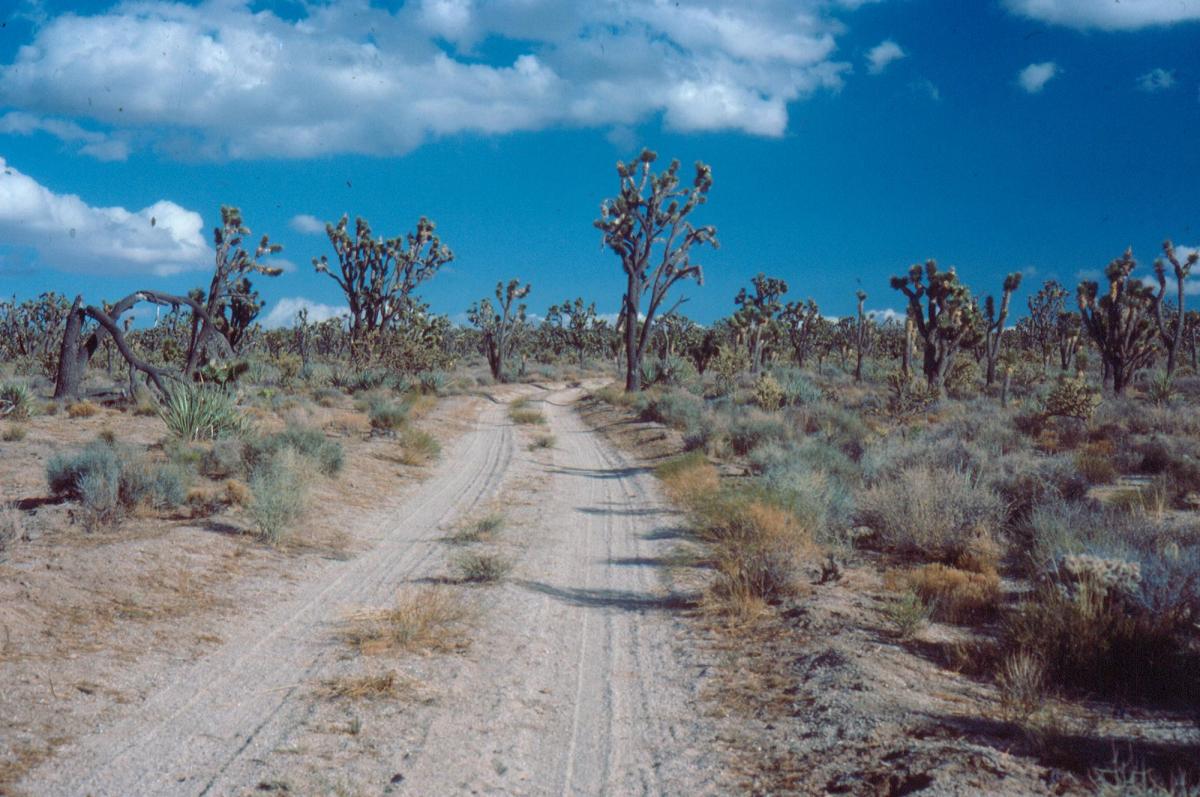Roads and Transmission Lines
Every utility-scale solar energy facility application includes the construction of roads. These roads may be paved or unpaved and will serve an array of functions including general mobility, access for panel cleaning, and repairs (Figure 1). In some locations, primary roads such as highways already exist, nonetheless, every applicant will need to at least improve existing roads and construct new maintenance roads through the solar panel fields. Additionally, given the relatively remote locations of many of these proposed projects and the limited amount of available capacity on the existing transmission grid, utility-scale solar facilities will also require new sections of transmission to be built. Due to the size of many of the proposed solar facilities, the total area that will be developed with road and transmission infrastructure will represent a considerable amount of land disturbance.

Although each project proposes some road construction, there is a sizable amount of variation regarding road disturbance area. Table 1 below shows the estimated amount of land that will be permanently disturbed due to road construction for four of the solar energy facility applications currently under review.
| Proposal Name | Permanent Disturbance Area (acres) | Nameplate Capacity (MW) | |
|---|---|---|---|
| Genesis Solar | 154.0 | 250 | |
| Solar One | 1132.0 | 850 | |
| Solar Two | 550.0 | 750 | |
| San Joaquin Solar 1 & 2 | 18.0 | 106.8 | |
| AVERAGE | 464 | 489.2 |
The variation in area of road construction can be substantial (Table 1). This variation results from numerous contributing factors, including:
- Surrounding Development: Some of the solar energy facilities are proposed for very remote locations, which currently have minimal or no existing access routes. Other projects are proposed for locations near agricultural or industrial development, where construction or improvement of access routes in the area has already occurred. The prevalence of existing access infrastructure will have a significant influence on how much new access infrastructure will need to be built.
- Previous Uses on Site: Although the majority of solar energy facilities are proposed on completely or largely undisturbed land, some have chosen locations that have recently hosted other types of development, such as agriculture or recreation. In these cases, even though the previous use has been abandoned, some of the road infrastructure may still remain in place. This would reduce the need for new roads to be constructed.
- Size and Layout of Proposed Solar Energy Facility: Design characteristics also play a role in determining the land area that will be required for road construction. Applications vary by technology type, nameplate capacity (total megawatts of the facility), and layout of the development, all of which can result in differences in the number and size of roads that must be built to serve the proposed facility.
Unfortunately, we were not able to perform a detailed analysis on the needs and impacts of transmission construction for two primary reasons. First and foremost, the highly sensitive and secure nature of transmission data makes it difficult to obtain unless formally working with a government agency. Second, information that was available was often times incomplete, insufficiently labeled, or outdated, and never included information on the specifics of proposed transmission. Due to this unexpected constraint, we chose to focus our research on the impacts associated with roads.
